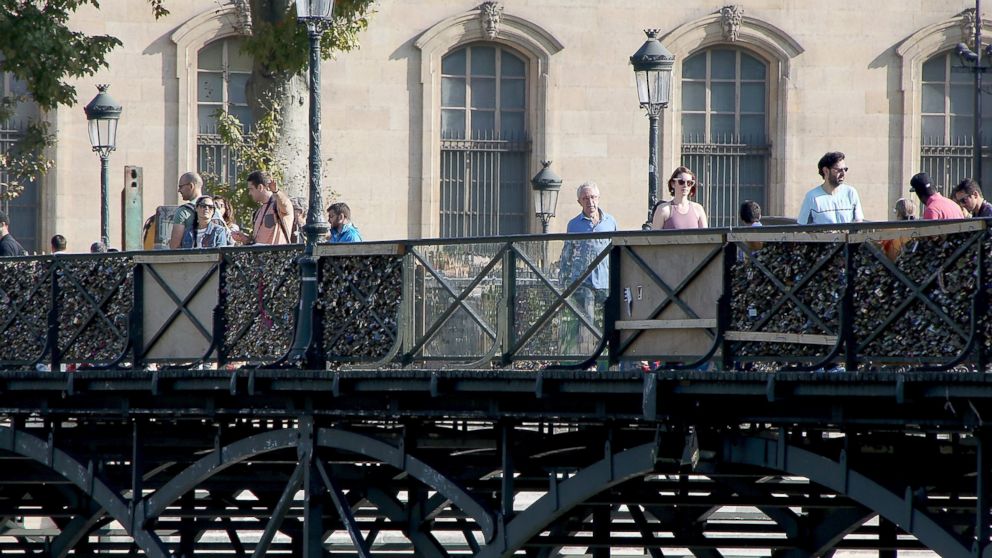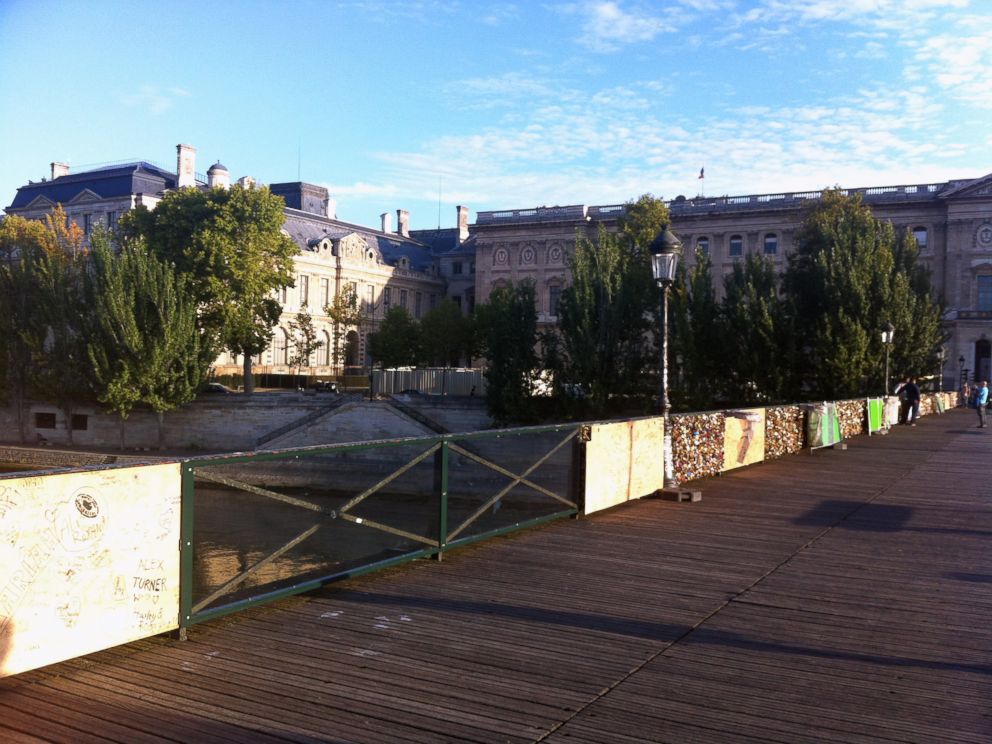Paris Locks Down on Bridge 'Love Locks'
The City of Love is installing glass panels to stop romantic "vandalism."

— -- Tourists around the world know Paris as the city of love. But the river Seine will soon be without some of its most popular symbols of romance.
For years, visitors to the French capital have expressed their undying love by attaching padlocks, often with names or messages inscribed on them, to the railings of some of the city's iconic bridges. But city officials in Paris announced a plan this weekend to remove the lock-laden railings and replace them with thick glass panels, paving the way for a potential end to the practice.
Authorities and residents of the City of Light have voiced disapproval for the budding tradition since the practice began. One of the leading critics of the locks is Lisa Taylor Huff, who began the "No Love Locks" campaign with partner Lisa Anselmo in January.
"Parisians, most of them, really hate these love locks," Huff told ABC News. "It's vandalism, and it's taken the ambiance away from the bridges."
Will This South Carolina Dam Become the New Paris Love Locks Bridge?
Weight of Love Cripples Pont des Arts Bridge in Paris
François Charlottin, a graduate student in Paris, agreed. "Most people here find those locks really ugly," he told ABC News. "Imagine you're trying to get a perfect picture on the Seine and you can't see past the locks on the bridge."
The locks first started appearing on bridges in Paris around 2008, shortly after young couples in Italy began attaching padlocks to the Ponte Milvio, a bridge over Rome's Tiber River, apparently mimicking the protagonists of a popular Italian novel.
"This really captured people's imaginations," Huff said. "After Rome started banning the locks, couples from all over Europe were coming to Paris."
In Italy, officials began to crack down after the padlocks began to pile up, along with graffiti and chains, which damaged the ancient Roman bridge. A similar process is now underway in Paris.

Although groups like Huff's have been petitioning the city government for months, it was only after a parapet on the Pont des Arts collapsed under the weight of the locks in June that the city got serious about putting an end to the practice. Another rail collapsed a month later, requiring repairs.
Now, city officials in Paris are experimenting with panels of thick, shatter-proof and graffiti-resistant glass to protect the bridges from further lock-related damage. Two panels were put up on the Pont des Arts, replacing the older railings. Huff said she expected a third panel in the next few weeks.
"The Pont des Arts is a lightweight pedestrian bridge," Huff said. "Some of the railings have 500 kilograms of locks by the time the city removes them. The one that collapsed in June weighed 700 kilograms."
Other Parisians see the locks as a tourist gimmick that damages the legacy of the city's architectural history.
"It's becoming a part of city life, but it's not a Parisian symbol," said Charlottin. "It's really only for the foreign tourists."
Add those aesthetic concerns, the mounting costs of maintaining the bridges and replacing the railings every few weeks as they filled with locks, and the city's decision appeared inevitable to lock critics such as Huff.
"They're a costly problem for the city and also a safety hazard," Huff said. "To us, this riverfront is something the city has an obligation to preserve."



